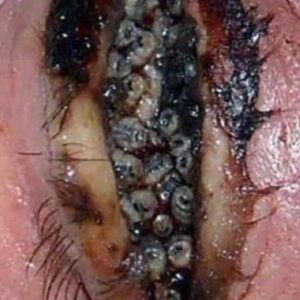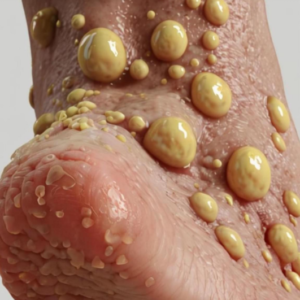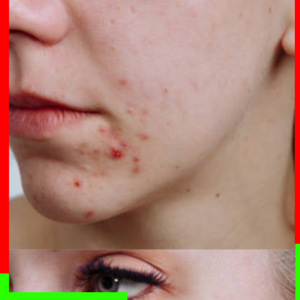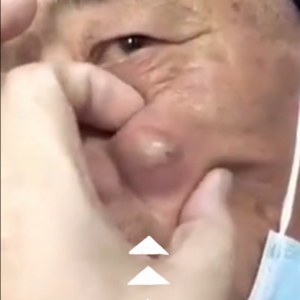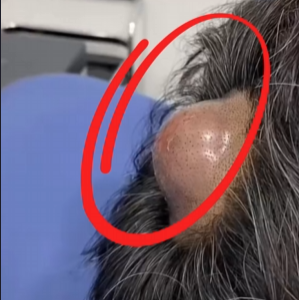A pilonidal cyst is a pocket of skin that typically forms at the base of the tailbone, near the top of the buttocks. It often contains hair, dirt, and skin debris, and can become infected, forming an abscess that causes significant pain. Here’s a comprehensive overview of what you need to know about pilonidal cysts:
What is a Pilonidal Cyst?
A pilonidal cyst develops when hair punctures the skin and becomes embedded. The body sees this hair as a foreign substance, which causes an inflammatory reaction, leading to the formation of the cyst. These cysts are usually located in the sacrococcygeal area, between the buttocks, and are more common in young men, though anyone can develop them.
What Causes a Pilonidal Cyst?
While the exact cause isn’t always clear, several factors contribute to the development of pilonidal cysts:
- Ingrown Hairs: Most experts believe that loose hairs that burrow into the skin cause the cyst. As these hairs become trapped, the body reacts to them by forming a cyst around the hair.
- Friction or Pressure: Frequent pressure or friction in the sacral area from prolonged sitting, tight clothing, or physical activities such as cycling may cause hair to penetrate the skin and trigger cyst formation.
- Hormonal Changes: Pilonidal cysts are more common during puberty, likely because of increased hair growth and hormone levels.
- Genetics: Some people are more prone to pilonidal cysts due to body hair type, structure of the gluteal cleft, or family history.
- Poor Hygiene: Lack of regular cleaning in the area may also contribute to the buildup of dirt and debris that can contribute to the cyst.
Symptoms of a Pilonidal Cyst
A pilonidal cyst may not cause any symptoms at first, but it can become infected and form an abscess. Symptoms of an infected pilonidal cyst include:
- Pain and tenderness in the lower back or tailbone area.
- Swelling and redness around the cyst.
- Drainage of pus or blood, often with a foul smell.
- Fever if the infection spreads.
- Difficulty sitting or walking due to discomfort.
How to Get Rid of a Pilonidal Cyst
Conservative Treatment
If the cyst is not infected, conservative methods may help manage it, including:
- Warm Compresses or Sitz Baths: Soaking the area in warm water can help ease discomfort, soften the cyst, and encourage drainage.
- Hair Removal: Shaving or using depilatory creams in the area can prevent further hair from embedding in the skin, reducing the likelihood of cyst formation.
- Improved Hygiene: Regular washing and keeping the area dry can help prevent infection.
Medical Intervention
If the cyst becomes infected or recurs frequently, medical intervention is often necessary. Common treatments include:
- Incision and Drainage (I&D):
- Procedure: A healthcare provider makes a small incision in the cyst and drains the pus or fluid. The area is then cleaned, and gauze may be placed in the wound to promote further drainage.
- Recovery: This is typically done under local anesthesia and offers quick relief from pain and infection. However, it may take a few weeks for the wound to fully heal, depending on the severity.
- Aftercare: Keep the area clean, change dressings regularly, and take prescribed antibiotics if necessary.
- Marsupialization:
- Procedure: In cases of recurring or chronic pilonidal cysts, a more involved procedure called marsupialization may be performed. After drainage, the wound is stitched open in a way that allows it to heal from the inside out, which reduces the risk of recurrence.
- Recovery: This type of surgery requires more recovery time than simple drainage but can be more effective in the long term.
- Excision Surgery:
- Procedure: If a pilonidal cyst keeps coming back, surgical excision may be required. This involves the complete removal of the cyst and its lining.
- Recovery: This surgery often requires more downtime, with the wound healing either by secondary intention (from the inside out) or being closed with stitches. Post-surgical care is essential to prevent recurrence.
- Recurrence: Even after excision, there is a small chance the cyst could return, especially without proper wound care and hygiene.
Healing a Pilonidal Cyst
Healing time depends on the size of the cyst, the type of treatment, and the individual’s overall health. Here are some tips for a smooth recovery:
- Keep the Area Clean: Gently wash the affected area with mild soap and water. Avoid scrubbing or using harsh cleansers.
- Wear Loose Clothing: Tight clothing can irritate the area and cause discomfort. Opt for breathable, loose-fitting garments.
- Hair Removal: Regular hair removal around the cyst site may be advised to prevent new hairs from embedding in the skin.
- Pain Management: Over-the-counter pain relievers such as ibuprofen can help manage discomfort during recovery.
- Sitz Baths: Soaking in a warm, shallow bath for 10-15 minutes several times a day can help promote healing and reduce pain.
Potential Complications
- Recurrence: Pilonidal cysts have a high recurrence rate, especially if not properly treated or if aftercare is not followed.
- Chronic Abscess: A cyst may keep refilling with pus if left untreated, leading to chronic infection.
- Fistula Formation: In rare cases, a pilonidal cyst can cause an abnormal connection between the skin and other tissues (fistula), requiring more complex surgical repair.
- Scarring: Surgical excision and healing by secondary intention may lead to noticeable scarring in the area.
Prevention Tips
Preventing pilonidal cysts involves lifestyle changes and maintaining proper hygiene:
- Regular Hygiene: Wash the area daily to remove dirt and hair that could lead to cyst formation.
- Avoid Prolonged Sitting: Take breaks and walk around to avoid pressure on the lower back.
- Weight Management: Maintaining a healthy weight can reduce the risk of cysts forming due to less skin friction.
- Frequent Hair Removal: Shaving or using depilatory creams regularly can reduce the chances of hair becoming trapped in the skin.
When to See a Doctor
If you suspect you have a pilonidal cyst, especially if it’s painful or showing signs of infection, see a healthcare provider. Early treatment can prevent the infection from worsening and may reduce the need for more invasive procedures later on.
By understanding the causes, symptoms, and treatment options for pilonidal cysts, you can take steps to manage the condition effectively, reduce pain, and prevent recurrence.
